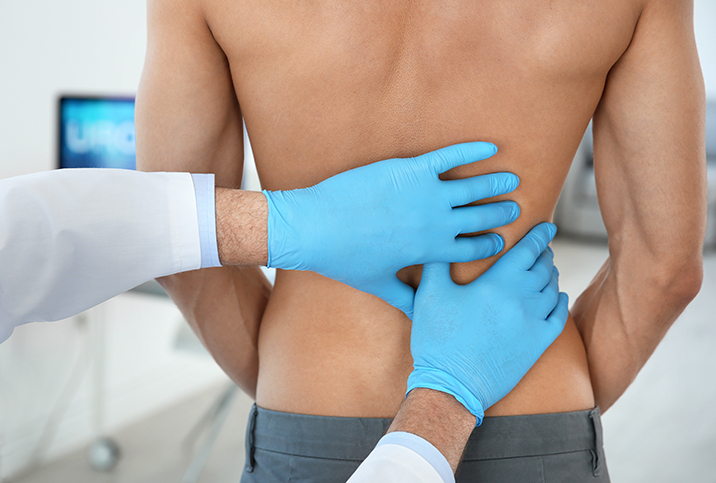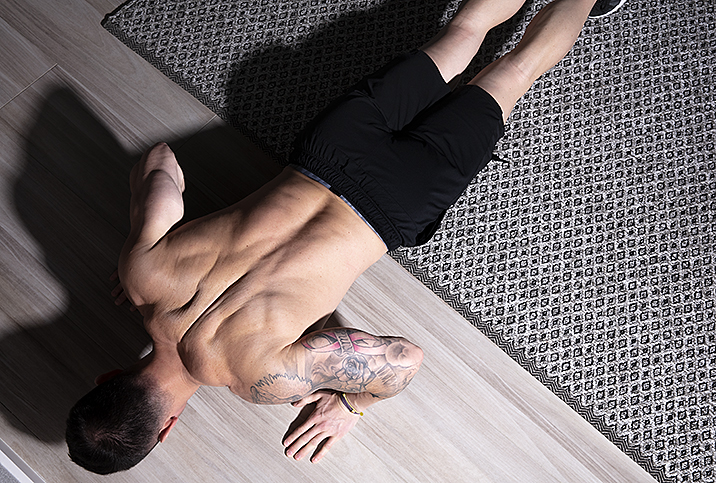Get Your Prostatitis Treated and Discourage Its Return

Prostatitis is inflammation of the prostate, a walnut-sized gland near the bladder that produces one of the components of semen. Prostatitis encompasses four conditions characterized by urinary problems such as painful urination, increased urination and trouble urinating. Men with prostatitis may have an infection, inflammation or pain. While men of any age can get prostatitis, it is more common in men younger than 50. It's important to emphasize that you are not at higher risk of getting prostate cancer if you have prostatitis.
Depending on your symptoms and test results, your doctor may diagnose you with one of the following types of prostatitis:
- Acute bacterial prostatitis. Typically caused by bacteria, this type generally starts quickly and causes flu-like symptoms, including fever, chills and nausea.
- Chronic bacterial prostatitis. This type is caused by the recurring bacterial infection of the prostate and is diagnosed by the high levels of white blood cells and bacteria. Unlike acute bacterial prostatitis, the infection does not respond immediately to antibiotics.
- Chronic nonbacterial prostatitis. Also known as chronic pelvic pain syndrome, this is the most common type of prostatitis. It shares many of the same symptoms as bacterial prostatitis. Many times, the exact cause cannot be identified.
- Asymptomatic inflammatory prostatitis. This type involves an inflamed prostate but no symptoms. It's often diagnosed with a blood test. Asymptomatic prostatitis does not require treatment but can lead to infertility.
Treatment for prostatitis
Your treatment for prostatitis will depend on the type you have. For acute bacterial prostatitis, you will need to take antibiotics for at least two weeks. If you have difficulty urinating, your doctor may use a catheter to drain your bladder. Nearly all infections that start quickly are cured with this treatment.
Chronic bacterial prostatitis requires taking antibiotics for a longer period, up to 12 weeks for some patients. The majority of cases can clear up with antibiotics. However, symptoms can return, and antibiotics are needed again. Low doses of antibiotics over the long term are used to ease the symptoms of chronic prostatitis.
Antibiotics can have side effects, especially when someone is misdiagnosed and given them when they don't have prostatitis. Fluoroquinolones, for example, are a class of antibiotics associated with side effects involving the tendons, muscles, joints and central nervous system. Tendon, muscle and joint pain, a tingling or pricking sensation and confusion are all potential side effects.
In most cases of chronic nonbacterial prostatitis, the cause is unknown. Treatment usually involves using medications to reduce symptoms. Muscle relaxers and pain relievers are commonly prescribed. Other treatments include nonsteroidal anti-inflammatory drugs (NSAIDs) and alpha blockers.
Alpha blockers relax the muscles at the neck of the bladder, easing the flow of urine. These drugs are most likely to work when the main symptom is difficulty urinating. Nonselective alpha blockers, such as doxazosin (Cardura), must be used with causation because they can drastically lower blood pressure. Selective alpha blockers, such as tamsulosin (Flomax), are less likely to lower blood pressure.
A prostate massage may help drain fluid that is causing the inflammation, with hot baths and heat therapies helping to reduce pain and discomfort. Alternative treatments using herbs and plants also may be helpful.
Prevention of prostatitis
The following preventive measures can help reduce your risk of developing prostatitis:
- Drink plenty of water. Staying hydrated is critical for maintaining good prostate health.
- Maintain proper hygiene. Keeping your genital area clean can reduce your risk of infection.
- Stand instead of sit, if you can. Long bicycle rides and a sedentary lifestyle can create abnormal pressure on your prostate gland, which can contribute to inflammation.
- Practice safe sex. Certain sexually transmitted diseases (STDs) such as gonorrhea and chlamydia can cause acute bacterial prostatitis. Wearing a condom during sex will help reduce your risk for prostatitis.
- Eat more fruits and vegetables. These foods have high levels of antioxidants and vitamins that help fight inflammation.
- Drink less coffee, tea and caffeinated sodas. Caffeine can irritate your prostate and make the symptoms of prostatitis worse.
- Exercise. Regular exercise can reduce your chance of prostatitis.
If you think you have prostatitis, see your doctor as soon as you can. A doctor can develop a treatment plan based on the type of prostatitis and symptoms you have. While prostatitis cannot always be cured, its symptoms can be managed.
















